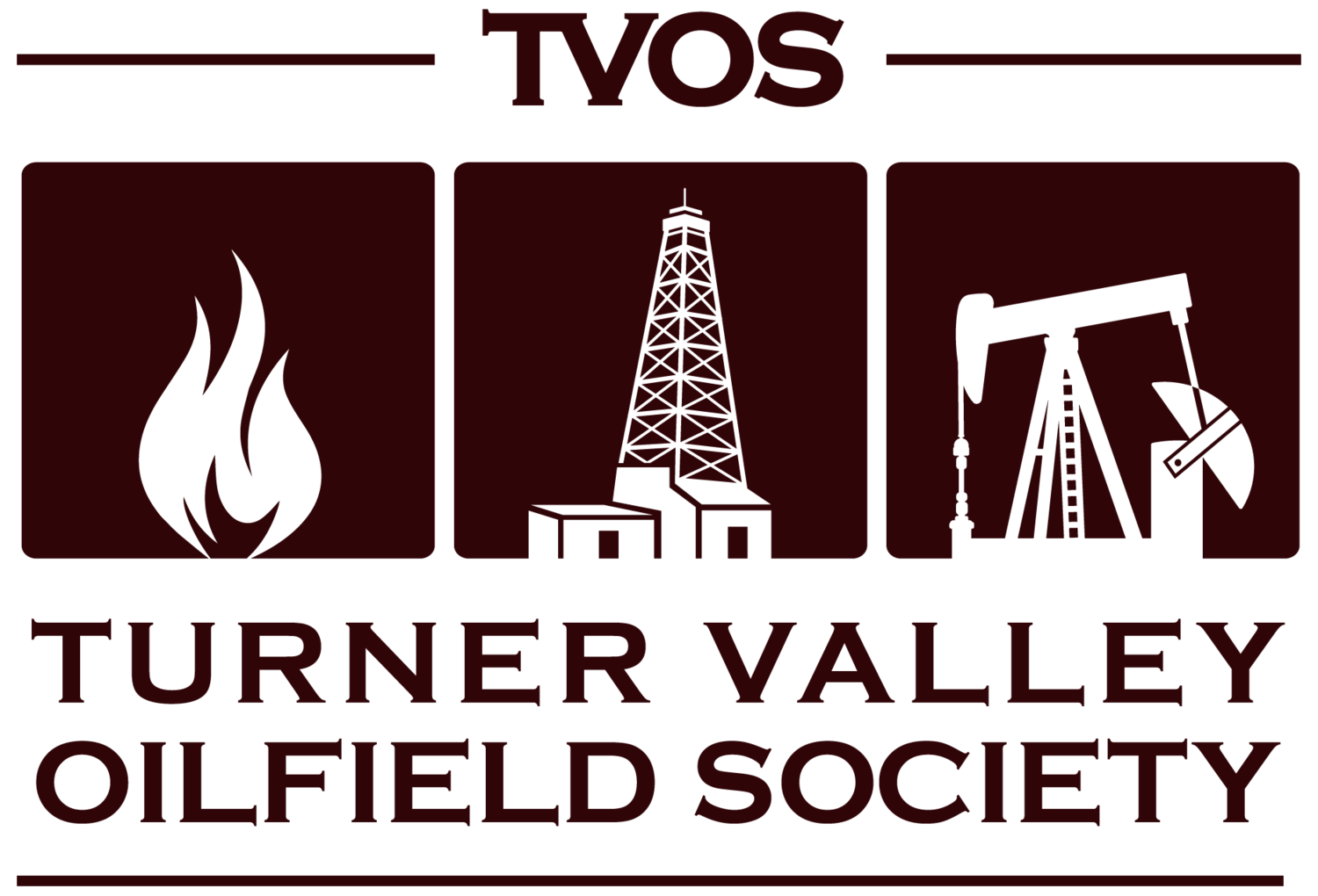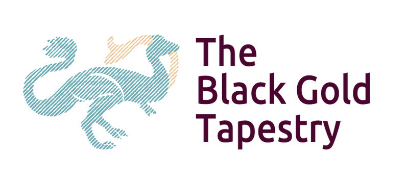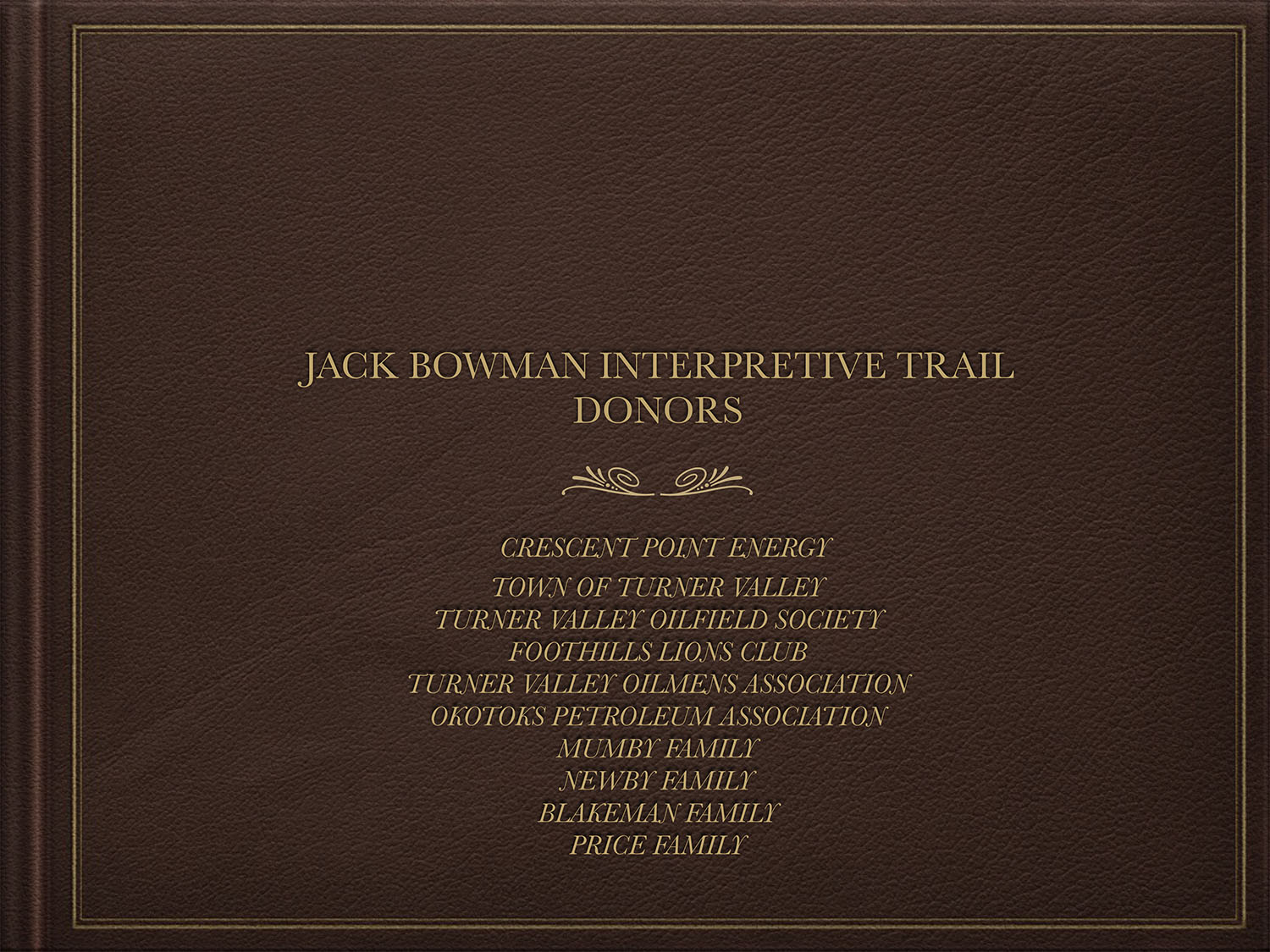Courtesy Glenbow Archives na-2570-20
Alberta Prime Time Video of the Turner Valley Gas Plant
/https://alberta.ctvnews.ca/marking-the-discovery-of-petroleum-in-alberta-1.3747376
TVGP will remain closed to the public until further notice.
/https://turnervalleygasplant.ca/covid-19-update
Become a member of the TVOS
/
It is time to renew your membership (or become a new member) in the Turner Valley Oilfield Society.
TVOS Then & Now Newsletter - June 2019
/Read the latest edition!
Adding to the TVOS Policy and Operating Procedures Manual
/A Strategic Opportunity Grant from the Calgary Foundation (Grant Number 20170140) has made it possible for the TVOS to add sections on human resources to its Policy and Operating Procedures Manual. Wise Resources, Inc. was retained to prepare documents so that the TVOS can be ready to hire staff to work on special projects and deal with day-to-day administrative details when financial resources permit. At its 16 April 2019 meeting, the policies and procedures were adopted. Many thanks to Janet Mathieson of Wise Resources, Inc. and to the Calgary Foundation for making this possible.
TVOS Then & Now Newsletter
/Our first edition of Then & Now newsletter!!
Society putting oil, gas history on the map
/Foothills: Turner Valley Oilfields Society creating digital story map
Larry Kapustka is heading up a project through the Turner Valley Oilfield Society to create a digital story map of the area’s history.
Photo credit: Brent Calver/Western Wheel
The Oil Field of the British Empire 1929
/This map (33” x 50”) and was donated to the TVOS on July 26, 2018 by Fred & Maxine Davidson of Black Diamond, Alta. It is titled “The Oil Field of the British Empire” published for sale by J.W. Downes, Calgary, July 1929.
Historian, David Finch, suggests that it was prepared for the purpose of stock promotion by various oil and gas exploration companies to raise money for further well drilling in the Turner Valley area.
WWII Era Cigarette Packette
/This image was sent in by a couple from Turner Valley. They found the cigarette package while tearing down their old house.
If you have any images or artifacts that you think the TVOS would be interested in please contact us.
Alberta Views Article March 2014
/100 Years of Oil: The legacy of oil at Turner Valley
Photos by George Webber
BY DAVID FINCH
MARCH 1, 2014
Turner Valley Gas Plant now open for tours!
/Visit TurnerValleyGasPlant.ca for more details.
Black Gold Tapestry presented at Glenbow Museum
/Calgary artist Sandra Sawatsky guided members of the Petroleum History Society (www.petroleumhistory.ca) on a private tour of her Black Gold Tapestry, a 67 metre long, hand-embroidered artwork telling the story of oil and gas from the beginning of time. The attached link provides additional photos and stories which may encourage you to see the tapestry in person. Click on the Black Gold Tapestry logo to visit the site.
Jack Bowman Interpretive Trail
/The TVOS wishes to thank the following donors for their contributions to the Jack Bowman Interpretive Trail.
Summer Gas Plant Tours
/TURNER VALLEY GAS PLANT GUIDED SITE TOURS. Saturdays, Sundays and Statutory Holidays until Labour Day Monday. Click for more information.
Speaker Series commemorates Churchill visit
/Join the TVOS and David Finch for the first Speaker Series talk. May 27, 2017, 2 pm at the Valley Neighbours Club.
See article in The Western Wheel
Also see article in The Calgary Herald
Churchill’s Visit to Alberta in 1929 and his Amazing Adventures
David Finch – 25 January 2017 talk to Petroleum History Society
“History will be kind to me for I intend to write it,” quipped Winston Churchill. His 1929 visit to the Turner Valley Oilfield was many things; holiday, escape from failure as a politician, part of a money making tour of North America and a way to spend time with his son, brother and nephew.
It was also a way for the statesman to continue to develop his capacity to understand the world he always wanted to rule. So who, exactly, was this man who visited the Turner Valley oilfield and the TVGP in August of 1929?
In 1965 he died. In 1955 he retired as prime minister, two years after being awarded the Nobel Prize in Literature for overall lifetime of writing. 1953 was also the year he was knighted by the Queen.
He became prime minister in 1951, a decade after his ill health became obvious to the public. When England declared war on Germany in 1939 Churchill was appointed first lord of the Admiralty, member of the war cabinet, and in 1940 he became chairman of the Military Coordinating Committee.
His WWII story is well known: he was a great leader during War and encouraged the United States to join the war effort. During the 1930s he watched Hitler gain power. In 1929 his Conservative government fell, and Churchill was out of power though he did not lose his seat. As one assessment puts it: "He was perceived as a right-wing extremist, out of touch with the people...."
As a result, he spent several years in the 1930s writing “A History of English Speaking Peoples.” This period of his life is called his “wilderness years” and as part of that banishment to the wild places he visited Turner Valley.
What happened to the man before 1929? Born in 1874 to an aristocratic family - mother was American, father British, he became a writer and journalist before going into politics. He was an officer and a soldier too; starting in 1895 in India and the Sudan, captured during the Boer War while as a correspondent, escaping heroically.
In 1900 he became member of parliament; a Conservative until he crossed the housed to the Liberals in 1904 and then crossed again in 1922 to the Conservatives. “Anyone can rat,” he famously quipped, “but it takes a certain amount of ingenuity to re-rat.”
As the first lord of the Admiralty during the Great War he commissioned oil-fired ships instead of coal. Promoted military aircraft and set up the Royal Navy Air Service.
1919 to 1922 and was minister of war.
Why was Winston so interested in the oilfields at Turner Valley? It had become evident to him during WWI that the future of power lay in petroleum. He took flying lessons - and crashed a plane. And during the war the government of which he was a part seized the assets of a German company that operated in England as British Petroleum, and instantly had an oil company of its own with production and distribution. In 1923, Churchill acted as a paid consultant for Burmah Oil (now BP plc) and successfully lobbied the British government to allow Burmah to have exclusive rights to Persian (Iranian) oil resources.
The Churchill tour of Canada was a month long – from Quebec City to Victoria, and part of a 3-month tour of North America. Brother Jack was with him and his son Johnny, as well as Winston’s own son Randolph. An admirer gave him a railway car for his Canadian travels.
“This is now our seventh consecutive night in the train and tomorrow will make an eighth,” Winston wrote his wife Clemmie. “The car is very comfortable. Although the baths are very short, by lying on one’s back with one’s paws in the air, a good dip can be obtained....”
In Edmonton in late August Winston and his tour met the mayor and various provincial politicians and the lieutenant-governor of the province, Dr. William Egbert. He have a speech at the MacDonald Hotel to sold out crowd and the reception was “deafening” when he rose to talk. The next day they went to a farm where Winston cut grain with a new device – a combine.
And then it was off to Calgary. Winston had repeatedly inquired about the visit to the oilfields and had learned that a forest fire near them might prevent such an excursion. Many of the details used for this presentation come from Churchill in North America, 1929 – by Bradley P. Tolppanen, a librarian in the United States who seldom travels to Calgary and gave me permission to quote from his book. I also used materials from the Churchill Archive and Alberta newspapers.
On 24 August 1929 in Calgary the Calgary Herald noted that Winston was running short of cigars – being in the habit of smoking them himself and giving them away as gifts. Once, when asked if he smoked too much he replied, “If I had not smoked so much I might have been bad tempered at the wrong time.”
The next day the entourage motored off to the oilfields, with many of Calgary’s oilmen in tow. Winston rode in an open topped car with he new friend Pat Burns, the might czar of the cattle industry and also a heavy investor in the oil industry.
A who’s who of the oil patch assured the tour hit all the highlights; W. Stewart Herron of the 1914 discovery well fame and John McLeod of Imperial Oil showed Winston around the largest producing oilfield in the British Empire. They visited recently drilled successful producing wells and lunched at the Turner Valley Gas Plant in fine style.
“The Imperial [Royalite] scrubbing plant in the oilfields was then visited before the party went on to inspect Royalite No. 4, which had hit at a depth of 3,740 feet. This well was one of the biggest producers in the valley, generating 21 million cubic feet of gas per day and 300 barrels of Naphtha that could be processed into gasoline. By 1926 the well was producing 217,000 barrels per year,” writes Tolppanen. “Winston was most fascinated.”
The tour also visited what Winston called the “pillars of flame” at Hell’s Half Acre where flares consumed “waste” or excess natural gas for which there was no ready market. Winston noted, “far more demons have been loosed than can be harnessed.”
Sam Coultis, gas plant manager, toured the facility with Winston’s group, answering questions of the man who “displayed a keen interest into the intricacies of the work carried on there.” Winston also listened intently to the hardships as expressed by Herron and others as to the difficulty of securing financing from British investors and promised to help in any way he could. This included investing in the field himself.
The tour went on to the EP Ranch and continued discussing the oilfield over supper. “I think I now understand how oil is produced and refined,” Winston said to his son and nephew after dinner, and promised to write about the process.
Randolph was less enthusiastic about what he had seen, summarizing the experience of touring the “satanic” looking valley with the wealthy oil men who were “pigging up a beautiful valley to make their fortunes and then being quite incapable of spending their money.” He even denounced them for a “lack of culture.”
Winston retorted. “Cultured people are merely the glittering scum which floats upon the deep river of production!”
The Churchill tour went for a ride on horses in the high foothills the next day at the ranch before moving on to Banff and points west.
“Darling,” Winston wrote his wife Clementine, “I am greatly attracted to this country. Immense developments are going forward. Never in my whole life have I been welcomed with so much genuine interest & admiration as throughout this vast country. I am profoundly touched; & I intend to devote my strength to interpreting Canada to our people & vice versa.”
Winston’s investments in three oil companies – Baltac, Hargal and Structure – all proved fruitless as the Turner Valley companies all went bankrupts in the early 1930s. His considerable investment – tens of thousands of dollars in 2017 value – came to naught. The Churchill family motto – Fiel pero Desdichado or Faithful tho unblessed – seems to have remained true in the case of this venture.
Luckily, Winston was able to make money as a writer and speaker.
His insights into society were many.
“The first duty of the university is to teach wisdom, not a trade; character, not technicalities. We want a lot of engineers in the modern world, but we do not want a world of engineers.”
And so, as the petroleum industry in Canada in 2017 once again reacts to the challenges of a low world oil price and uncertainty due to the change in leadership in the United States, another of Winston’s quotes seems timely.
“Success is the ability to go from one failure to another with no loss of enthusiasm.”
David Finch is a historian and author of more than 20 books about the history of the Canadian West.















